It's no secret that natural resources every year becomes less and less. And we are talking not only about minerals and animals - plants that inform the eyes with green foliage, also disappear with a catastrophically frightening speed. There are already hundreds of cities in the world, where they simply do not have a place for an ordinary park with shady trees and benches under them. One of the most successful and at the same time sad examples - Megapolis Tokyo. It is so overcooked and stubble with skyscrapers, and the air is so contaminated there with exhaust gases, which, with all the desire, it would be difficult to grow something on earth. But the resourceful locals found a way out - they arrange gardens on the roofs and walls of the omnipresent stone giants. Fortunately, in our cities, there is no such problem yet, but everything comes to that. And if you do not want to go to dozens of kilometers from the city to be in the village of Nature, why not create this stronger with your own hands? Garden gardening is available to everyone, and if approaching work competently, you can create the most real paradise.
Where to start: drawing up a plan
It would seem that it would be easier to put on an empty plot of more plants and rejoice in the work done? However, that green neighbors please you yearly, then fragrant blossoms, then the bizarre coloring foliage, the constant emerald cheese, you need to competently plan the landing, choose suitable cultures and make zoning. First of all, make a list of plants that feel comfortable in your area. On the Internet, you can find a lot of omnissal options for landscaping a plot and garden, but the cultures presented there may simply be as follows in the first year after disembarking.
When choosing future neighbors, take into account your knowledge in the field of gardening. If you have absolutely no experience, it is better not to buy whimsical cultures. And if you intend to visit the garden only in the summer and, then only on weekends - and suppressed. Fortunately, in the middle band there are many copies that are not inferior from the beauty of exotic cultures from overseas countries. Determining with plants, you need to take into account the where you will land them. Thus, you immediately make a plan for landscaping. It will help with this difficult task a classical method of separation of the site.
Zones for landscaping on the plot:
- external;
- internal;
- intermediate.
Consider each of them in more detail.
External zone
The outer zone of landscaping is a plot separating the street and actually a plot. As a rule, this is an ordinary fence from boards, grids, bricks and other boring materials. But to make this part of the territory of truly beautiful, you can create a "live fence". Such a green fence is quite capable of replacing a trivial masturbation design, protecting the territory from unwanted spectators and penetration no worse.
Usually, the living hedge is organized from fruit trees ahead with low shrubs. Thus, the height of the fence is provided by trees, and the density is bushes. A very successful for this purpose applied apple, plums, silk, juniper, pine. You can plant and cedar, but at the same time consider that this is a very powerful and durable tree, capable of growing up to 40 m in height.
The lower row of such a hedge can be made of lush flowering shrubs, such as lilac, jasmine, currant, roses, etc. They reliably hide you from the views of curious passersby and give a delightful fragrance.
It often happens that at the border of the site, wild cultures settled firmly. To make a beautiful green hedge, it is not necessary to rapidly unreliable to these old-timers - you can simply enjoy them. This is much harmful, and much easier. To do this, carefully cut the sticking branches by the secateur, sit near unpretentious cultural flowers and bushes, put a few large stones - in general, try to harmoniously beat the natural landscape.
Inner zone
When with the magnitude of the easiest part of the site is finished, and it was the easiest part, you can proceed to landscaping the inner zone. Here there is a chance as you should "get roaring" and fantasize! The inside is called space adjacent directly to the residential house. For its refinement, all sorts of flower beds are used, flower beds, curb crops along the tracks and around the decorative ponds.
Of particular attention in the landscaping of this zone, curly plants are deserved (ivy, lianas, grapes, etc.), since with their participation you can create real wonders of landscape art. They are not only beautiful by themselves, but also help to mask unsightly features, for example, slots, lumen unsuccessful laying, etc. Such plants on arbors and terraces are very successful. For registration of the rest area, it is often organized by Altanka - this is a light openwork design, liauny.
In addition to climbing crops, ampel plants are used for the design of the inside. They are distinguished by lush flowering and falling branches, so they are planted in suspended pots, kashpo or wicker baskets. For the middle strip, unpretentious varieties such as fortune, support, fuccia, dichondra, pelargonium, etc. are best suited.
Intermediate zone
The design of the intermediate part is considered the most time consuming, since it must be as close as possible to the ideal, because it is located on this zone the view from the windows of a residential building, at the entrance to the site, from the arbor or place of rest. This is a kind of culminating center of your landscape composition, so it is necessary to pay attention to its creation not only the choice of plants and the location of their deployment, but also the technical side of the case. It belongs to the drainage system, watering, irrigation.
Useful advice: Very convenient when bookmarking the garden to immediately create an autonomous watering system, for example, using a powerful pump. A reservoir can be used as a source if there is nearby, well or well.
What should be in the intermediate part? This entirely depends on your preferences. Fans of minimalism will have to do with a neat carpet of the green lawn. You can build a small alpine slide or, if it allows the area, large-scale mountaineering with a waterfall and a pond. In the article "Molpinarius do it yourself" You will find all the necessary information.
Vertical gardening
It has already been known for vertical landscaping to the world for a very long time, but for some reason, for some reason, for some reason, for some reason, forget about him when the question arises to find the site. Meanwhile, this is one of the most spectacular and at the same time compact ways of growing ornamental and garden crops. Not only climbing, letters and ampel plants are suitable for this, but also the most ordinary. To give the house, fences and the garden are attractive to use special designs and devices, allowing you to create an original vertical flower leaf and ride any surface regardless of its position in space.
Methods of implementation
The ideas of vertical gardening in the garden are a lot, but we will touch only the most popular and easily implemented with your own hands.
Vertical Gardening Options:
- Gardening of buildings - This method is especially common in the UK, known for its low cozy cottages. And the lush vegetation of the walls turn such houses and at all in the stronghold of comfort and tranquility. You can make a vertical flower leaf on a separate wall or covered with it the whole house. The most appropriate cultures for this are different types of ivy and wild grapes. The latter is most popular due to the magnificent color of fading foliage - with the onset of autumn, dark green color is replaced by bright purple shades, which looks simply amazing. With the help of vertical landscaping at home, you can hide the walls of the walls and finishes. By the way, if you do not want to bother with decoration, it can be replaced with vegetable cover at all.
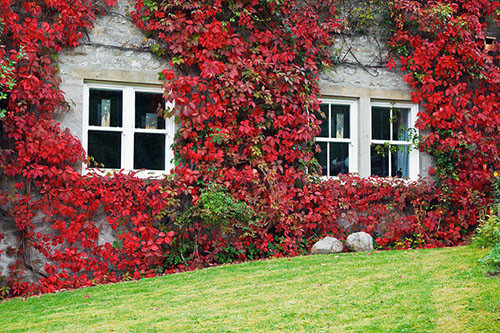
- Creating a unique microclimate with large-scale landscaping. If you get to go seriously, it is quite realistic to change the microclimate on a separately taken site. For this, plants need to be made by all arches, verandas, tracks, walls of the house - in general, all free areas. In addition to the abundance of a cool shadow in the summer, lush thickets will reduce the noise level, will give a lot of fresh air and will make it less hot even in a hot day. This is explained by the fact that the moisture is evaporated with the vegetation covered with the vegetation, therefore there will be less dust in it, and the air will remain wet and cooled.

- Zoning of the site with vertical landscaping. A very convenient solution that will help split the section on the functional zones in a completely natural way. To create such living partitions, special designs are used, which are seized by vegetable crops.
Designs for vertical landscaping
We have already mentioned the mysterious special designs that allegedly help to hold the plants in a vertical position and distinguish between the very space. In fact, no secrets use metal and plastic networks, wooden grilles, screen, arches and pergolas to create vertical plantations. In total, a couple of such elements in the garden can completely transform the landscape, giving it ease and grace.
Consider which structures can be used for vertical landscaping of the living garden:
- Arches are a pretty trivial element, often used in landscape design, but over the past few years, the arches have become more popular. If you have at least a little loose place on the site that you planned to take a gazebo, try instead of the usual building to put a few arches in the form of a gallery. Place the plenty roses, Ipomeju, hops or honeysuckle, and the result will exceed all the expectations.
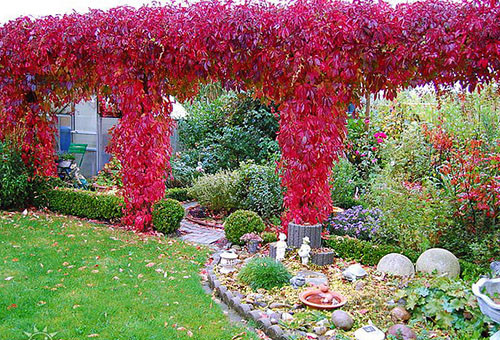
- Suspended boxes - container landscaping is also considered vertical. To do this, not only wooden boxes, hanging them above the ground, but also plastic containers and all kinds of vases. In such a simple way, you can enjoy any wall of the house, a barn or even a fence. Very nice looks of various volumes, located at different heights. You can put in them petunia, begonia, pelargonium or various ampel varieties. Such a solution is perfect for landscaping in the Winter Garden.
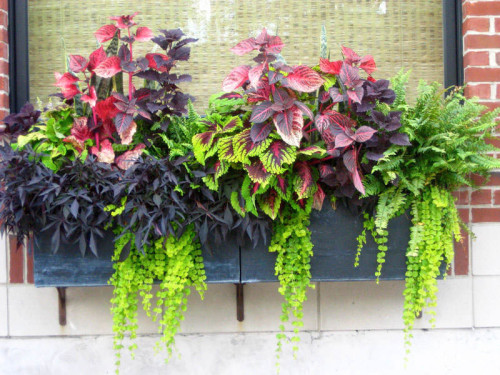
- Pergolas are peculiar decorative wooden lattices used to landscap in areas. Any plant, designed in this way, will look picturesquely on a neat lattice background. Pergolas are superbly combined with arches and such solutions can often be found in the catalogs of modern landscape design.
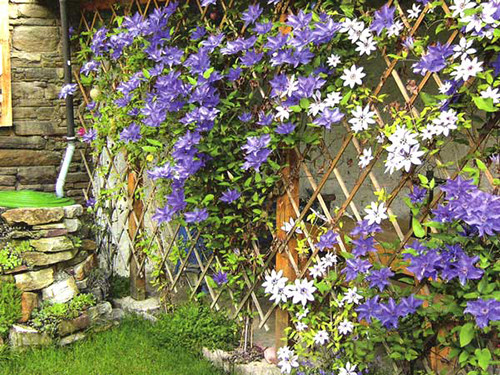
- Living hedges - we have already described all the advantages of using living ingredients, but they can be created not only as a fence, but also inside the site for zoning. In the role of alive hedge, Shirma or Trellier can act, since such light designs do not occupy a lot of space and skip the sun's rays needed to grow plants.
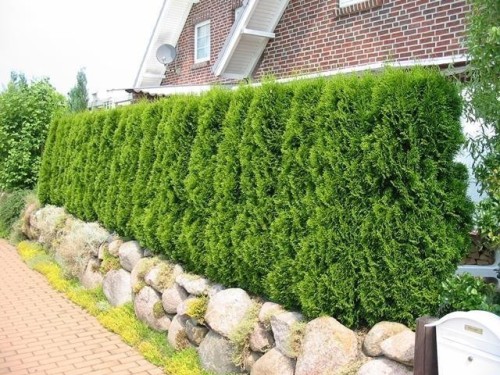
- Vertical flower beds - to make such a pictorial composition, use several boxes or containers for plants, hanging them at different heights (as a rule, 3 tiers are made). You can put in such drawers anything, ranging from decorative floral crops, ending with spicy herbs and even vegetables. If you really want to get a garden, but the modest area of \u200b\u200bthe site does not allow you to "get roaring", the vertical flower bed will become an excellent way out. As an alternative, resourceful dacms came up to grow vegetables not in boxes, but in special pots-pockets, suspended straight to the wall or fence. For its manufacture, a shoe suspension is often used (there are slippers for guests in such houses), but you can sew pockets of the original sizes with your own hands. It is important that the selected cloth misses the water well, but it was not rotten and was durable.
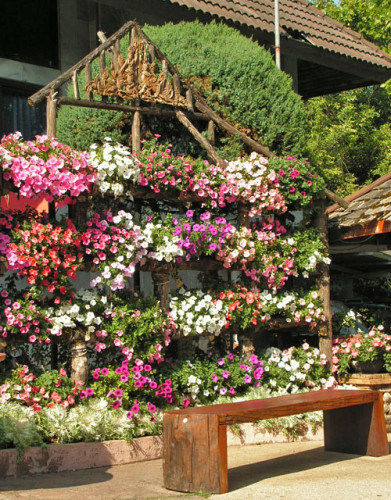
- Flowers-towers are another original way of gardening garden design. For this take several boxes of various sizes. The biggest put on the ground, on it - the box is smaller and so on. Then the ground is poured inside and plant plants in loose places between the drawers. They hide their greenery and flowers, which therefore it seems that you have a colorful flower pyramid. Ampels can be placed on the very top, and to plant asters, velvets, dahlias, lavender in the lower boxes, and etc. Also, a successful solution will be the use of Waller Balzama for vertical landscaping. Such flowers in the garden will delight bright coloring and lush foliage.
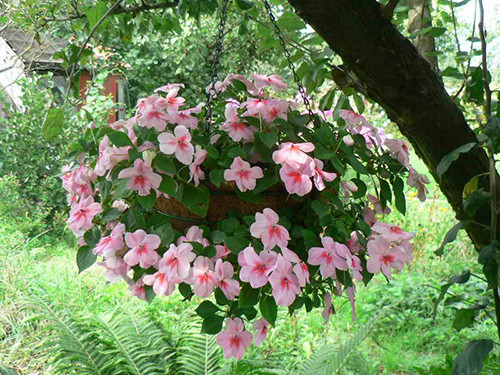
Useful advice
Finally, we suggest you familiarize yourself with useful advice that will help you cope with the gardening of the garden during the cottage of individual buildings. First, the location of all buildings on the site should be taken into account and in accordance with this select plant crops. Some plants love straight solar rays, others in such conditions will quickly be worse. Some cultures have a powerful root system, so they may harm the foundation or destroy the garden tracks while in close proximity.
It is also extremely important to prepare the soil. The work consists in leveling relief or opposite - creating elevations and low-rise in accordance with the preferences of the selected plants. In the soil you need to make the necessary fertilizers, align the acidity, remove weed herbs, output insect pests. So that the plants have not suffered from thirst, organize drainage drank in advance, as well as take care of the water supply system of the site. If you visit the garden is not too often, the best solution will make automatic watering.
Do not forget about the grassy cover of the site, otherwise, after the landing of all selected crops on Earth, naked losers will remain, which pretty suggests a general view. A more couple of words about the choice of plants - it is clear that it is best to plant perennials, but among them there must be several evergreen crops. These are not necessarily high pines or cedar, fir or juniper is quite suitable.
Everyone for landscaping your garden can be found not only in specialized botanical stores, but also in the wild. Some herbs, for example, Lavender can be obtained completely free of charge, it is important only to transplant correctly. When designing, try to withstand the color harmony, picking up not too contrasting colors and herbs. One or two bright stains will be quite enough, especially if you decide to consume the whole house with wild grapes. In this case, your site will turn into an amazing microworld, where calm, clean air and a constant mood reigns.

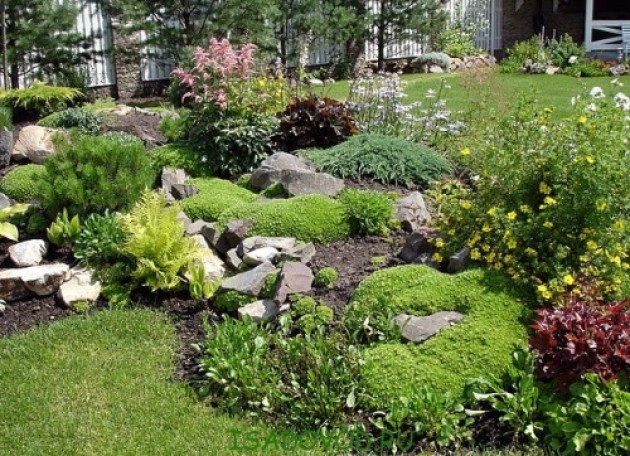
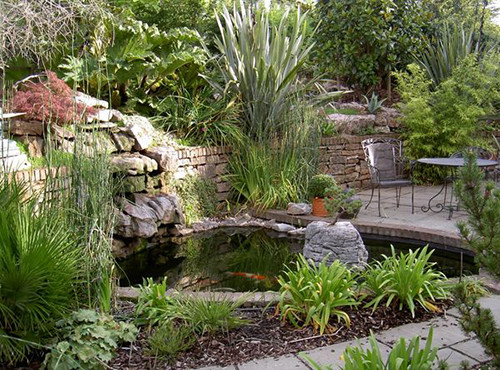
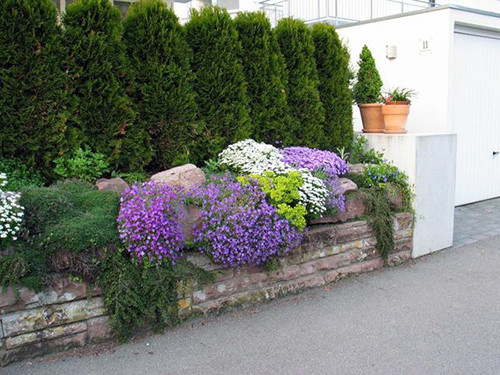
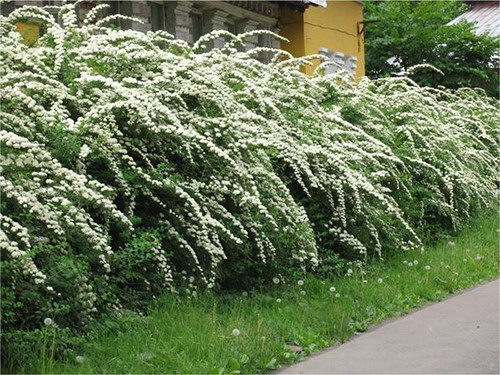
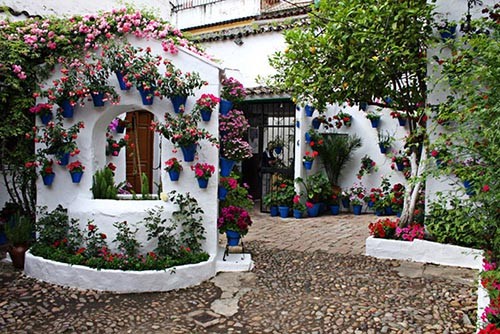
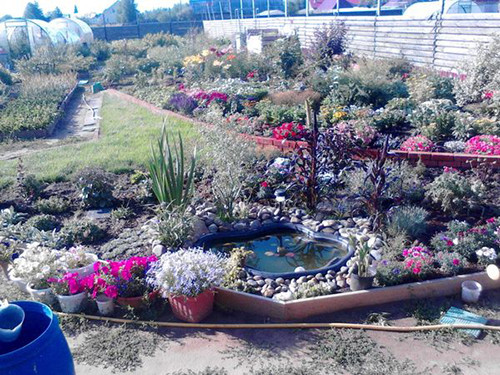
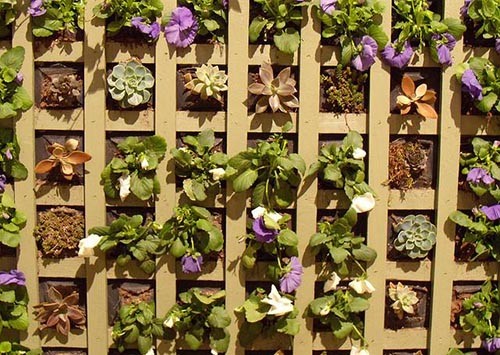
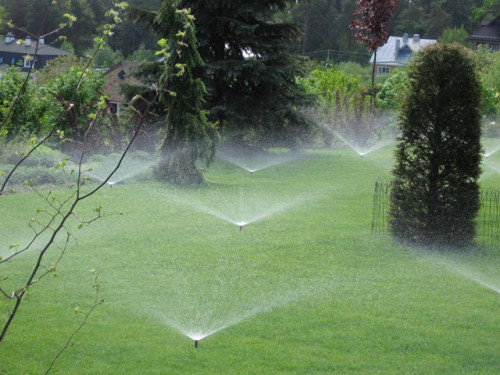
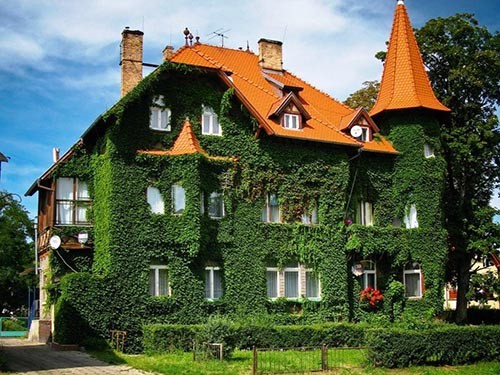
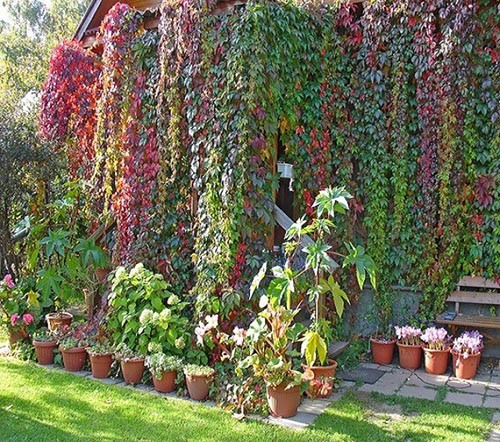
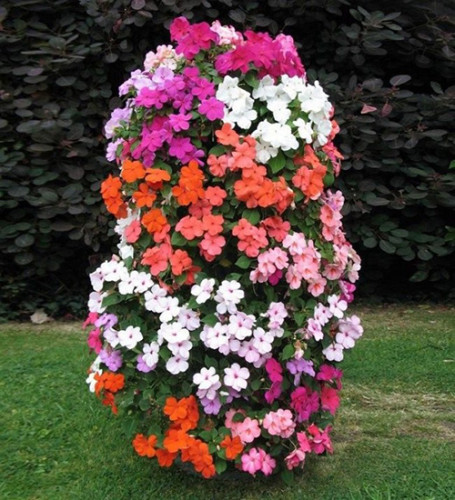
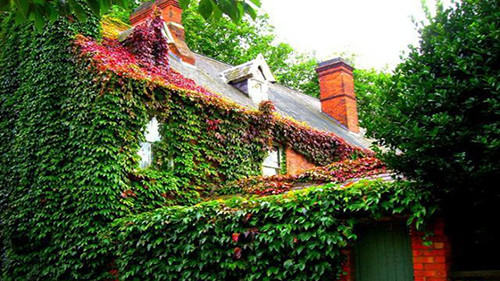
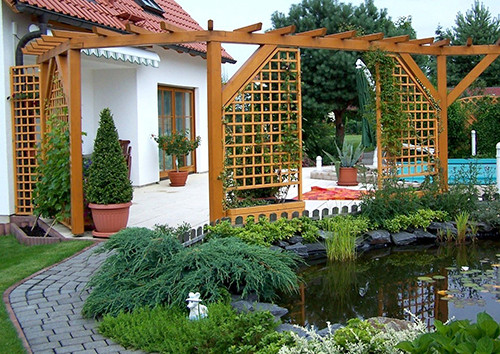
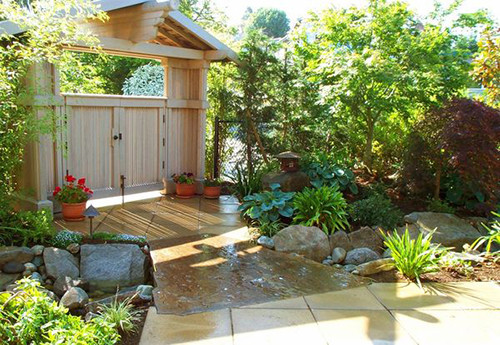












 Start a discussion ...
Start a discussion ...